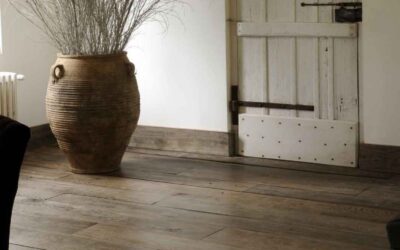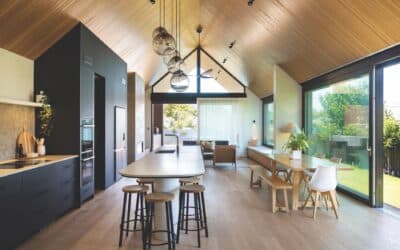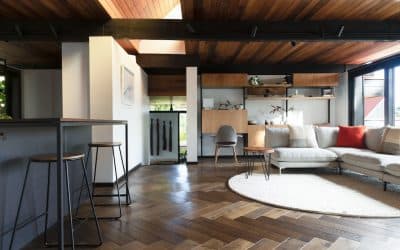A Guide for Architects, Interior Designers, and Homeowners
At Vienna Woods, we understand the elegance and durability that timber flooring brings to any space. As experts in providing high-quality engineered oak flooring, we are committed to not only offering the best products but also ensuring their longevity and beauty in your projects and homes. One common issue that needs addressing in timber flooring is ‘cupping’ – a phenomenon that can affect both solid and engineered floors. This article is crafted to help our architects, interior designers, architectural builders, and homeowners understand cupping, its causes, and effective remedies.
What is Cupping in Timber Flooring?
Cupping occurs when the edges of a timber floorboard rise higher than its center, creating a concave shape. This is commonly observed in both solid wood and engineered wood floors. Cupping is often a response to moisture imbalance within the flooring material – a higher moisture content on the bottom surface compared to the top.
Causes of Cupping
-
Moisture Imbalance: The primary cause of cupping is a difference in moisture levels between the top and bottom of the flooring. This can be due to environmental humidity, spills, or moisture from the subfloor.
-
Inconsistent Manufactured Moisture Content: Engineered floors are manufactured at specific moisture levels. If these levels are not consistent across the layers of the board, cupping can occur after installation.
-
Subfloor Conditions: Moist subfloors, especially under bamboo or engineered floors, can transfer moisture to the flooring, leading to cupping.
-
Environmental Factors: Factors such as sun exposure, heating, and air-conditioning can impact the moisture balance in timber flooring.
Remedies for Cupping
-
Preventative Measures: The best remedy is prevention. Ensure a continuous plastic damp proof layer is installed between the engineered wood flooring and the subfloor. This helps prevent moisture-related cupping.
-
Re-sanding and Refinishing: In milder cases, re-sanding the affected floor can even out the surface. However, ensure the moisture content of the floor is stable before sanding.
-
Floor Replacement: In cases where cupping is extensive and other methods are ineffective, replacing the flooring may be necessary.
-
Environmental Control: Implementing measures like window treatments and mats can help control the factors contributing to cupping.
-
Subfloor Assessment: Addressing any issues with the subfloor, including moisture and stability, is crucial in preventing and remedying cupping.
Why This Matters to You
For architects and designers, understanding these issues ensures that your designs maintain their integrity over time. For builders, this knowledge helps in delivering durable and high-quality flooring to your clients. And for homeowners, being informed means you can better care for and maintain the beauty of your timber floors.
At Vienna Woods, we believe in empowering our clients with knowledge. Understanding issues like cupboarding enables you to make informed decisions about your flooring, ensuring lasting beauty and durability. For more information or to explore our range of high-quality timber flooring, visit us at www.viennawoods.co.nz.


